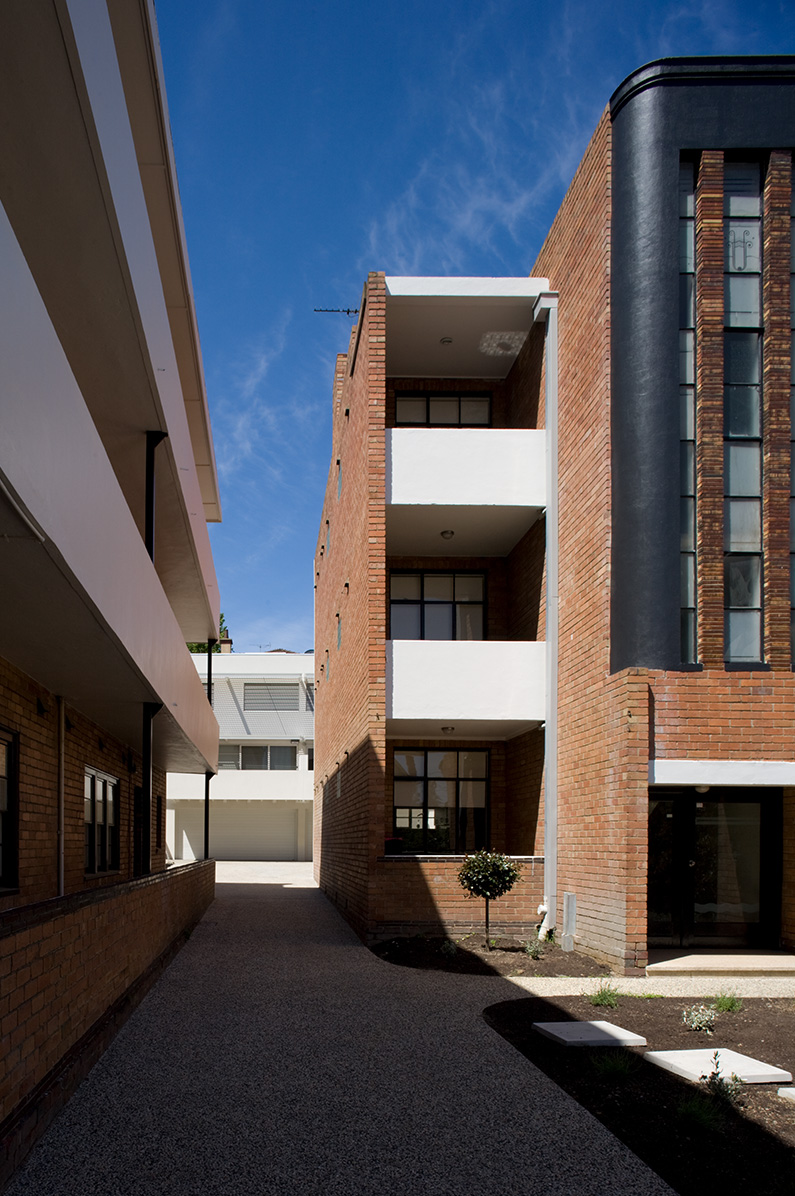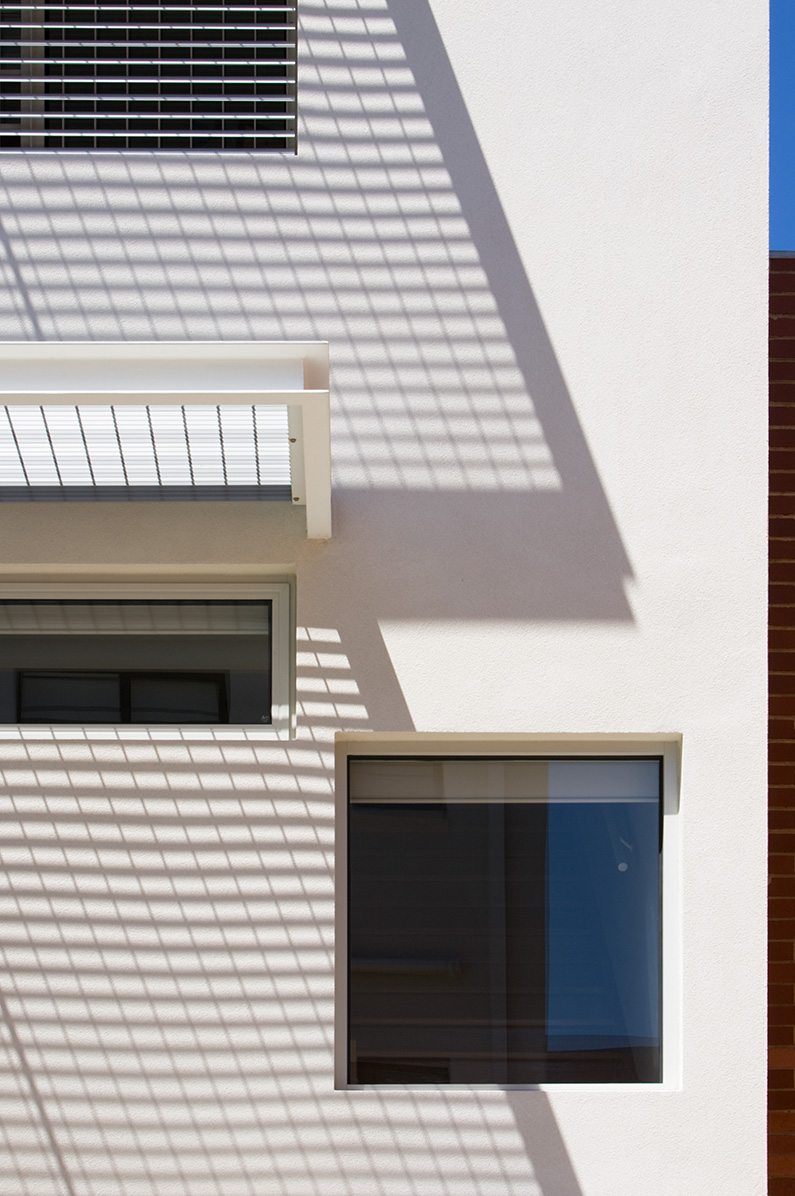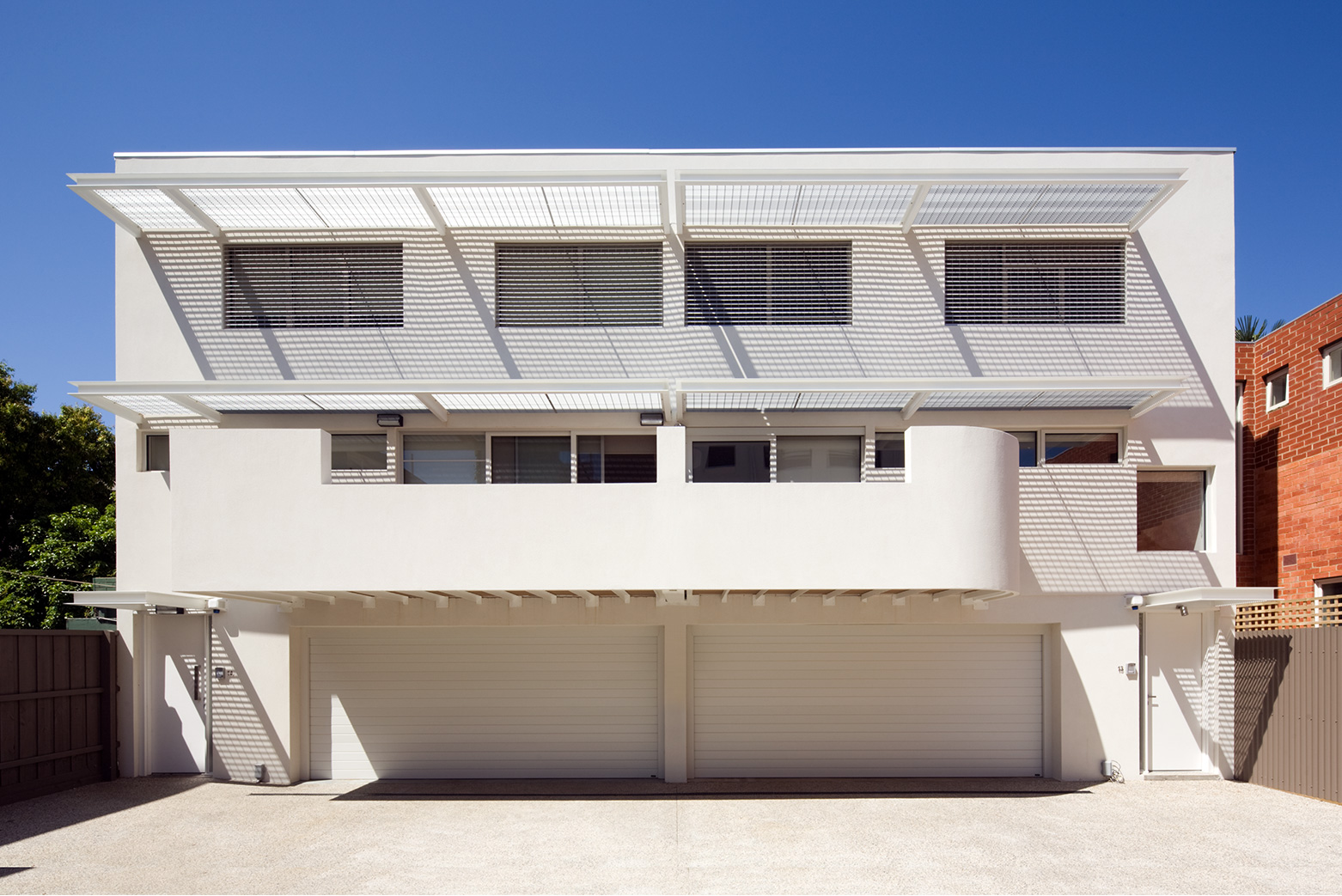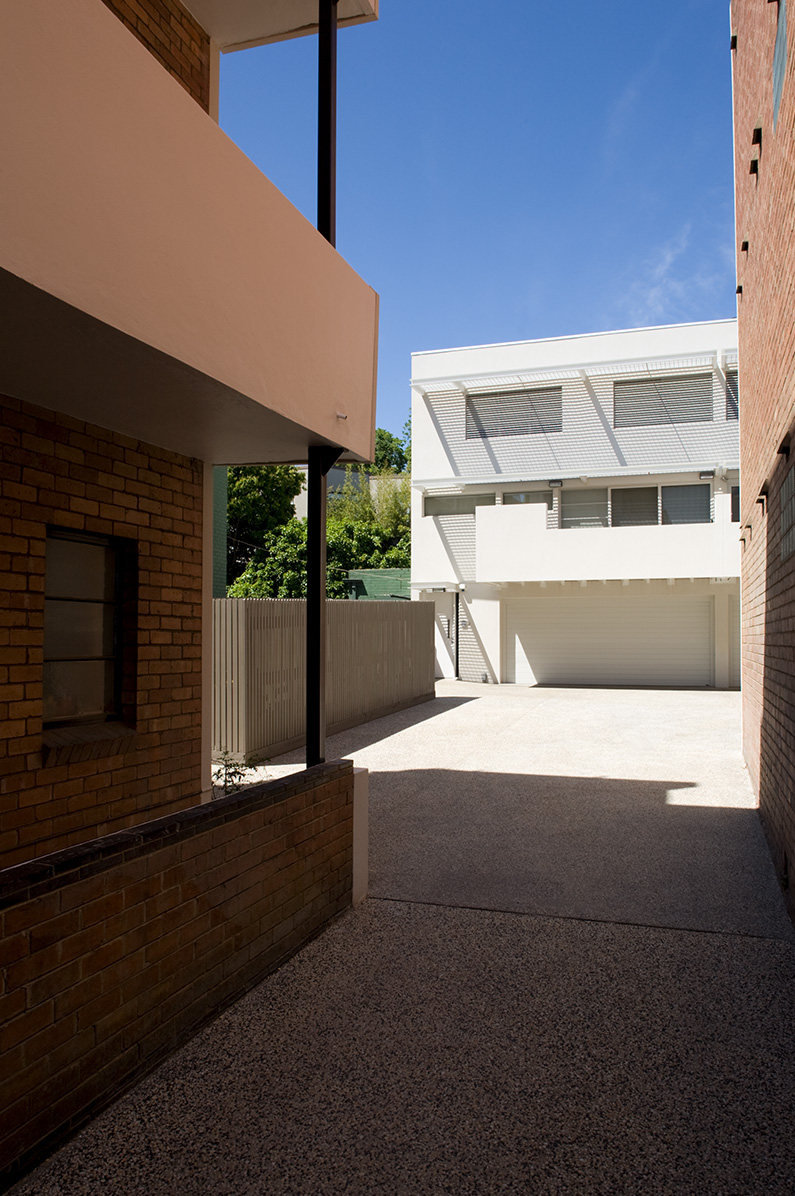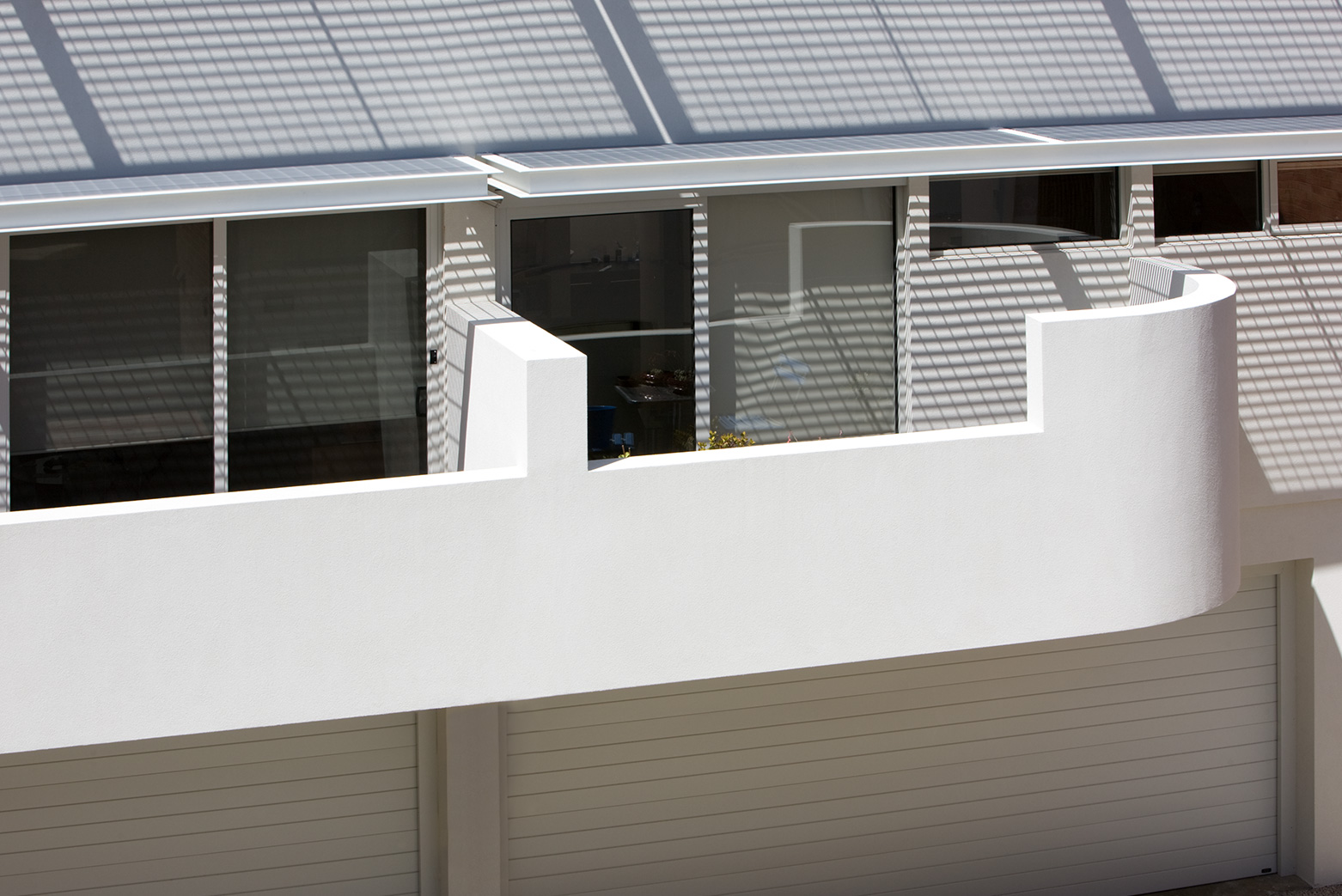Located in an established neighbourhood, the original late 1930s Art Deco-style apartments form an important part of the streetscape. Constructed in brick, with a distinctive curved stairwell, these two apartment blocks, separated by a driveway, previously led to a large back yard with a few rudimentary sheds and carports.
Read more
Not surprisingly, given the land value in this highly prized pocket of Melbourne, the brief to Steffen Welsch Architects was to develop the rear garden and transform it to include a separate apartment building. Rather than try and mimic the past, the approach was to design a modernist Bauhaus-inspired building that would create a ‘dialogue’ with the original apartments. Constructed in brick and lightweight construction, these stand-alone apartments are spread across three levels, with garaging for four cars at ground level. Comprising four one-bedroom apartments (each one being approximately 50 square metres in area), two on each level, the design is both simple and elegant, with crisp modernist lines that loosely evoke the streamline modernist period of 1930s architecture. The first-floor apartments also have their own balconies, with solid curved balustrades that add to the cruiser aesthetic that was popular in the ‘30s. And to diffuse the light, the two apartments on the top floor feature perforated steel shades that create a continual play of light on the pure white façade.
While these apartments are relatively modest in scale, there’s a sense of spaciousness with the galley-style kitchens forming part of the open plan living areas. Designed to rent rather than sell, these apartments appealed to those looking for simple and uncluttered spaces in one of Melbourne’s most coveted suburbs. And rather than being jarring with the original Art Deco apartment blocks, the pure white modernist façade at the end of the concrete driveway, acts as a beacon of light, one with a slight glow of the 1930s Art Deco movement. The new development also accents the richness of the past, improving the character of this heritage neighbourhood in the process. Timeless and elegant, ‘Art Deco’ as it’s referred to, was delivered by Steffen Welsch Architects in a cost effect manner.
